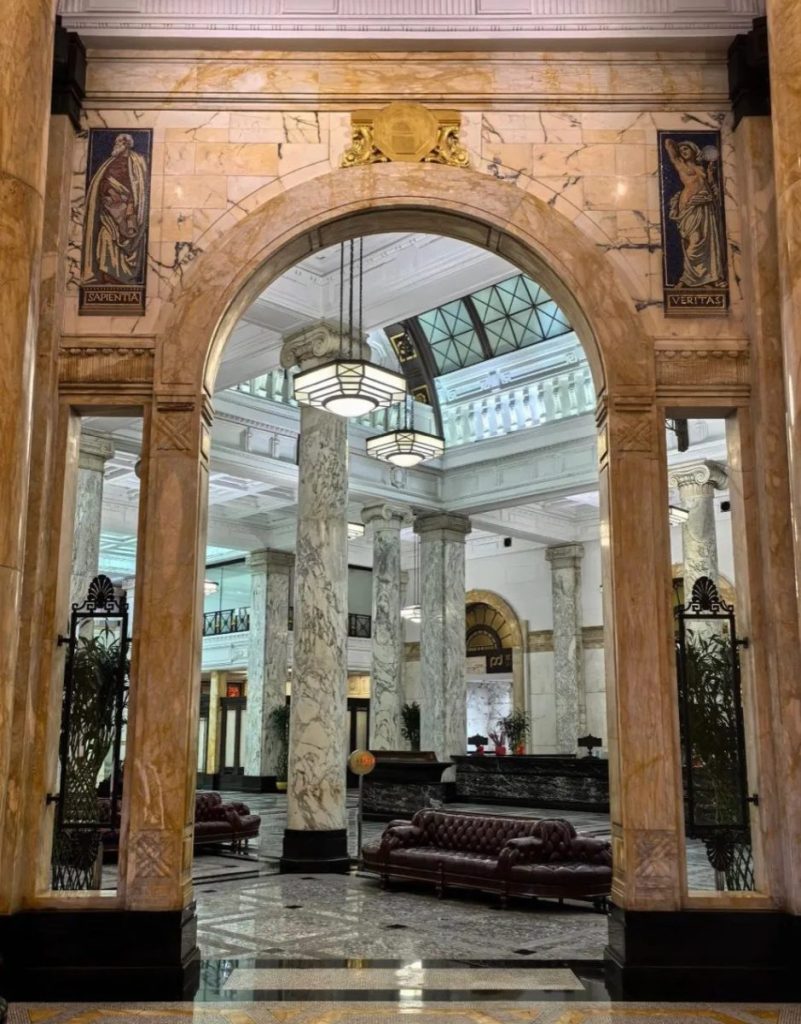The history of the HSBC building dates back to the late 19th century when, in 1874, the bank bought a plot of land south of Shanghai’s River Customs and built a three-storey building in the English classical style.
Over time, the bank’s business grew rapidly and the original building was not enough. So, in 1921, HSBC decided to tear down the old building and build a brand new one.
The construction of the new building started on May 5, 1921, designed by the famous British architectural firm Palmer & Turner Architects and Surveyors and built by the British merchant Droe Kerr. The building was completed on June 23, 1923 after 25 months of construction.
The cost of the building was very high, reaching 10 million taels of silver, which was almost equivalent to two years of HSBC’s profits, and accounted for more than half of the total cost of all the buildings on the Bund at that time.
The completion of the new building further consolidated HSBC’s financial position in Shanghai and the Far East. Covering an area of 9,338 square meters with a floor area of 23,415 square meters, the building was one of the largest and most spectacular buildings on the Bund at that time, and was even called “the most luxurious building from the Suez Canal to the Bering Strait in the Far East”.
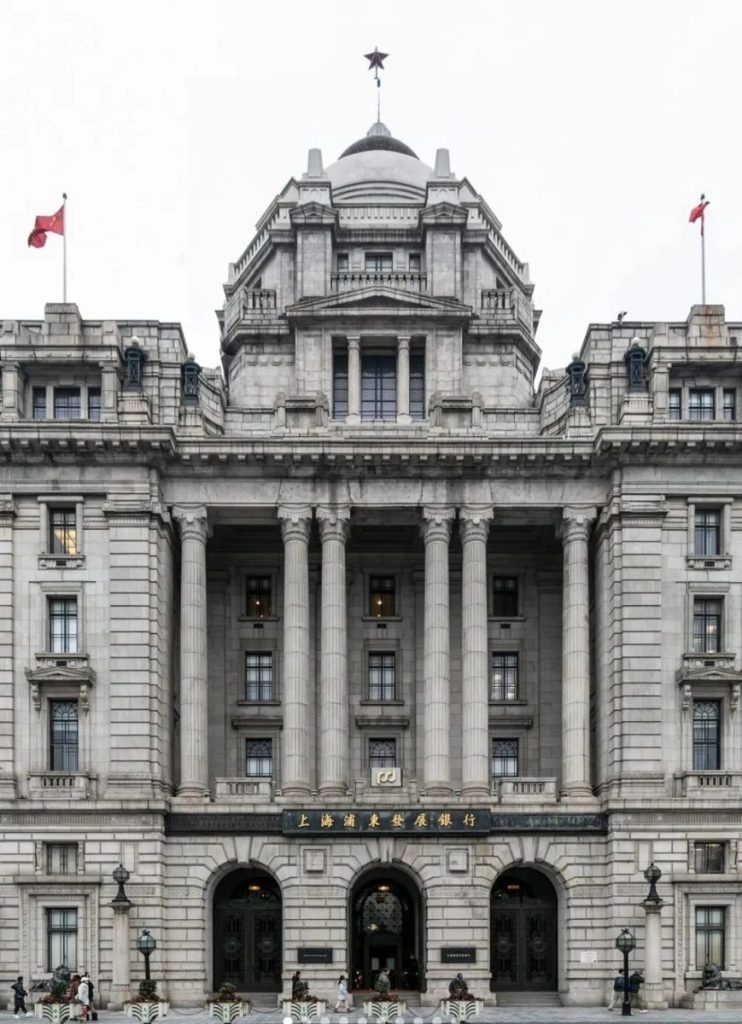
Architecturally, the HSBC Building is a masterpiece of neo-classicism. The building’s exterior is designed in three horizontal and vertical sections, with a tall dome in the center and a unique triangular base that resembles a Greek temple. Underneath, there are six Ionic columns running from the second to the fourth floor, displaying classical beauty. The main body of the building has five floors, but the central portion is raised to seven floors with a solid and modern steel frame structure, and the facade is plastered with granite, giving it a very dignified appearance.
There are also two majestic bronze lions in front of the building, guarding this witness to history. The interior decoration of the building is also very exquisite, using marble, brass and other materials with exquisite craftsmanship. In particular, the eight pillars of the business hall were built from whole marble, which was unique in Asia at that time.

The upper wall and dome of the octagonal foyer are inlaid with eight large murals, made of hundreds of thousands of colorful mosaics. The murals depict the architectural appearance of HSBC’s branches in eight cities at the beginning of the 20th century – Shanghai, Hong Kong, London, Paris, New York, Tokyo, Bangkok and Calcutta – and are accompanied by images of characters from Roman and Greek mythology.
Today, the HSBC building has become the headquarters of the Shanghai Pudong Development Bank. However, the building still retains its original architectural style and interior decoration. For tourists, it is not only a good place to appreciate the architectural art, but also a window into Shanghai’s modern financial history.
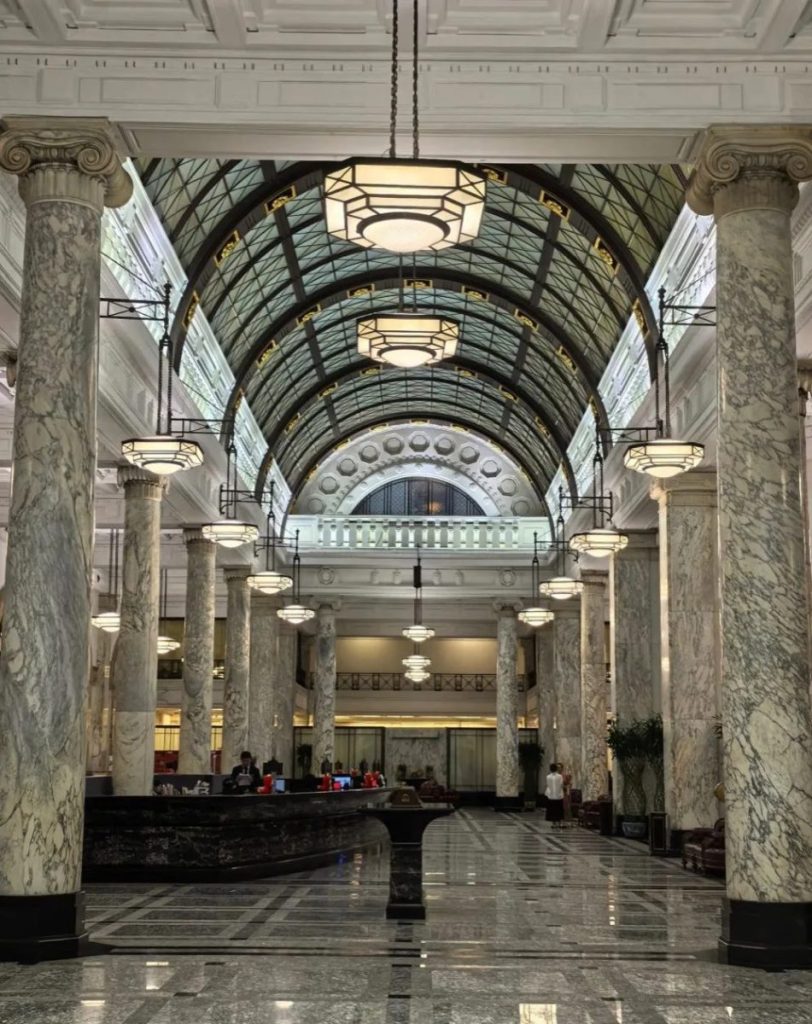
Visiting Information: The exterior of the building is open all day, but the interior is only open during office hours (Mon-Fri 09:00-17:00, Sat 09:30-16:00, closed on Sunday).
Transportation: Take Metro Line 2 or Line 10 to East Nanjing Road Station, exit the station and walk for about 10 minutes. Or you can also reach the Bund neighborhood by taking Shanghai Bus No. 20, No. 251, No. 65, No. 66, Tourist Line 8 and many other buses.
Building Features: From the outside, the neoclassical style of the HSBC building makes it one of the most prominent buildings in the Bund complex. The interior is equally beautifully decorated and visitors can catch a glimpse of it while conducting business. The mosaic murals in the octagonal foyer and the entire marble columns in the business lobby are highlights not to be missed.
In addition, the HSBC Building Shanghai has three rare treasures:
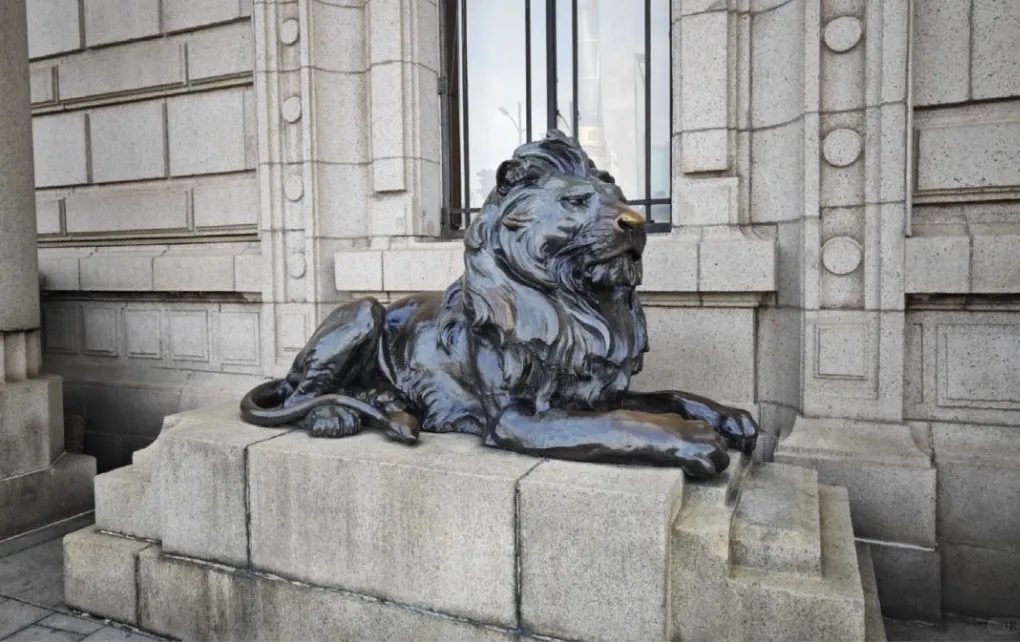
- Bronze Lions: There are two bronze lions in front of the building, named Steffen and Shidi. One of them opens its mouth and the other closes it, symbolizing the flow of bank funds. These two lions represent the authority and honor of HSBC and are out-of-print treasures.
- Mosaic Mural: The mural depicts the iconic architecture of eight world-famous cities, topped with figures from Greco-Roman mythology. There are also images of constellations between the eight frescoes and the dome fresco.
- Italian Natural Marble Columns: Inside the building’s lobby there are 28 marble columns 13 meters high, four of which are carved from a single block of marble, which is very rare. These marble columns not only support the building’s magnificent structure, but also symbolize stability and durability.
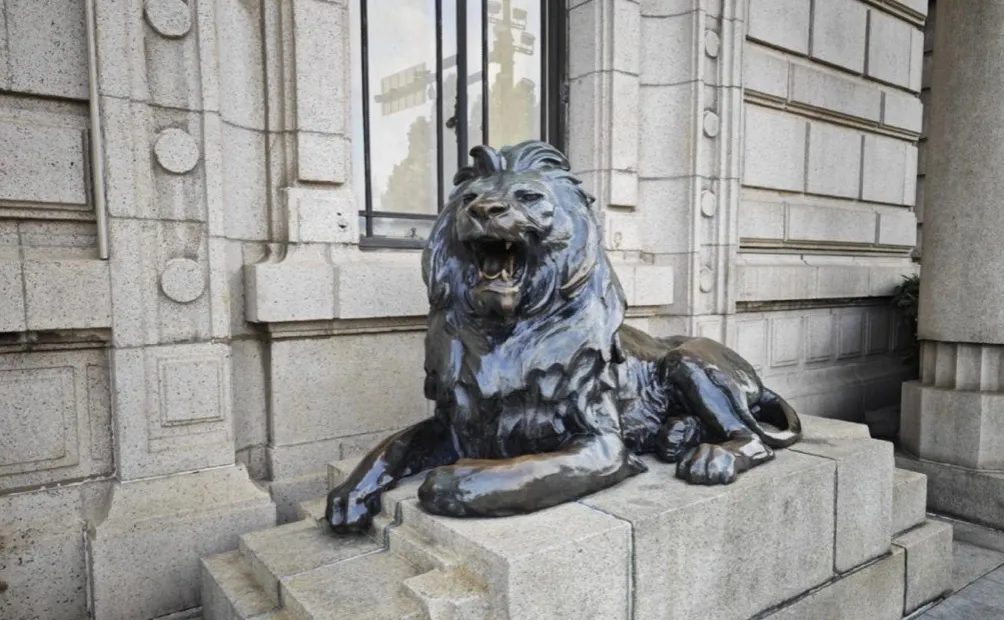
The building not only witnesses the development of HSBC in China, but also reflects the great changes in Shanghai and Chinese society. The building is an invaluable resource for both tourists and historical researchers to explore in depth.
